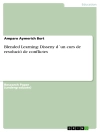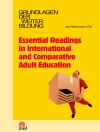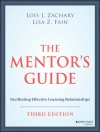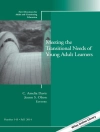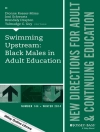This comparative resource charts the interface between the University of the Third Age (U3A) movement and active ageing, and in doing so, offers a comprehensive and thorough understanding of what U3A means in different geographical and sociocultural contexts. After first providing introductory chapters to introduce the U3A movement and active ageing in global perspective and tracing the origins of U3As in France, the book sets off charting the international development of U3As in both European and Asian-Pacific contexts. Deliberately, the book moves away from the dominant Anglo-centric US- and UK-rooted analyses of U3As to account for contexts of different political ideology, sociocultural values, geography, and degrees of urbanisation and industrialisation. Lastly, it thematises foreseeable issues, concerns, and predicaments that the global U3A movement faces while meeting the challenges and seizing the opportunities presented by active ageing.
The chapters’ comparative perspectives encompass:
- Origins and development: The Francophone model of U3As
- The development and characteristics of U3As in European and Asian-Pacific geographies
- From social welfare to educational gerontology: U3As in China, Russia, Taiwan, Malaysia and South Korea
- U3As in Italy, Spain and Sweden: A dynamic, flexible, and accessible learning model
- Late-life learning for social inclusion: U3As in Poland, Iceland, United Kingdom, and Malta
- The U3A movement in Australia: From statewide networking to community engagement
- Cross-cultural perspectives on U3As: The case of Thailand
The University of the Third Age and Active Ageing boasts welcome contributions to the scholarship on the different histories, structures, and challenges posed by national U3As. Readers from a variety of backgrounds and research interests including gerontology, geriatrics, active ageing, older adult learning, comparative education and educational technology will find this a necessary and valuable resource in better understanding a globalised U3A world.
‘The University of the Third Age and Active Ageing: European and Asian-Pacific Perspectives contributes to the deep well of histories, experiences, structures, accomplishments and problems of national U3As. It emerges as a tapestry of extraordinary research that offers to guide the U3A movement as it soon enters its fiftieth year of existence.’
– Prof. Stephen Katz. Trent University
Table des matières
Foreword.- Part I: The Background Context.- Chapter 1: Active Ageing through Lifelong Learning: The University of the Third Age.- Chapter 2: Origins and development: The Francophone Model of Universities of the Third Age.- Part II: European Perspectives.- Chapter 3: “An Alternative Ageing Experience”: An Account and Assessment of the University of the Third Age in the United Kingdom.- Chapter 4: Be Active through Lifelong Learning! The University of the Third Age in Iceland.- Chapter 5: The University of the Third Age in Italy: A Dynamic, Flexible, and Accessible Learning Model.- Chapter 6: Subsisting within Public Universities: Universities of the Third Age in Germany.- Chapter 7: Third Age Learning for Active Ageing in Malta: Possibilities and Limitations.- Chapter 8: Late-life Learning for Social Inclusion: Universities of the Third Age in Poland.- Chapter 9: Universities of the Third Age: Learning Opportunities in the Russia Federation.- Chapter 10: From University Extension Classrooms to Universities of Experience: The University of the Third Age in Spain.- Chapter 11: Sweden’s Senior University: Bildung and Fellowship.- Part III: Asian-Pacific Perspectives.- Chapter 12: The University of the Third Age Movement in Australia: From Statewide Networking to Community Engagement.- Chapter 13: The Development and Characteristics of Universities of the Third Age in Mainland China.- Chapter 14: Third Age Learning in Hong Kong: The Elder Academy Experience.- Chapter 15: The University of the Third Age in Lebanon: Challenges, Opportunities and Prospects.- Chapter 16: Moving the Needle on the University of the Third Age in Malaysia: Recent Developments and Prospects.- Chapter 17: Universities of the Third Age in Aotearoa New Zealand.- Chapter 18: Third Age Education and the Senior University Movement in South Korea.- Chapter 19: From Social Welfare to Educational Gerontology: The Universities of the Third Age in Taiwan.- Chapter 20: ‘Lifelong Education’ versus ‘Learning in Later Life’: A University of the Third Age Formula for the Thailand Context?.- Part IV: Coda.- Chapter 21: Concluding Remarks and Reflections.
A propos de l’auteur
Prof
. Marvin Formosa, Ph D, is Associate Professor and Head of the Department of Gerontology and Dementia Studies, Faculty for Social Wellbeing, University of Malta. At the University of Malta, he coordinates the Master of Gerontology and Geriatrics, and the Master of Arts in Ageing and Dementia Studies. Presently, Prof. Formosa holds the posts of Chairperson of the National Commission for Active Ageing (Malta), Director of the University of the Third Age (Malta), and Director of the International Institute on Ageing United Nations – Malta (INIA). Recently, Prof. Formosa headed UN-sponsored training programmes in gerontology, dementia care and geriatrics in the Philippines, China, India, Turkey, Malaysia, Belarus, Kenya, Dominican Republic, and Russia. Prof. Formosa is the author or various articles and books on mainstream and educational gerontology, is Editor-in-Chief of the
International Journal on Ageing in Developing Countries, and is Country Team Leader (Malta) of the Survey of Health, Ageing, and Retirement in Europe (SHARE).


